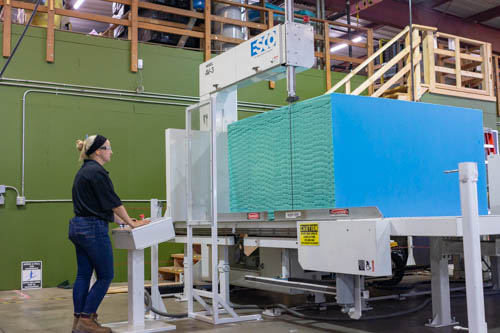Basics of Custom Industrial Foam Packaging
25 February 2020

Foam is an effective cushioning and vibration dampening medium used in one-time and repetitive packaging of sensitive and/or fragile products. Foam can also be used for blocking and bracing and shock and vibration protection in crates and cases. Because foam is lightweight and relatively cheap to manufacture, it can protect a shipment during transit without adding substantial weight and cost.
How It Is Made?
Foam is made from different polymers that are then expanded or blown by other chemicals, gasses, or processes to create an expanded foam material with tiny air bubbles inside. These air bubbles, surrounded by the plastic or rubber structure around them, provide cushioning and protection from shock and vibration.
History of Foam Use in Industrial Packaging
Expanded foam was invented during World War II—its original application was for floatation devices for the military. Shortly after it’s invention, it became obvious that polyethylene foam (PE) was also an excellent packaging material. Because most early applications of foam were used for the military, standards were developed that provided consistency of sizes and foam properties across the industry.
Why Foam is Ideal for Transporting Sensitive Equipment
The primary characteristics of foam that make it ideal for packaging and material handling are:
- Acts like a spring (returns to its original shape)
- Weighs very little
- Widely available and cheap to manufacture
- Durable and resists tearing
- Easy to fabricate into shapes
- Provides shock absorption on impact
- Dampens vibrations
Protecting Your Equipment with Foam Packaging

Foam packaging can have a profound impact on the reliability and survivability of your shipment. Fabricated foam can be designed to fit any type of shipper such as a corrugated box, hard case, ATA case or wooden crate. The foam cushioning inside a case, crate, or box prevents damage to your equipment or product from shock and vibration. Protection and containment are the most important considerations of foam packaging. Appropriate design is affected by the weight, geometry, fragility, and sensitivity of the equipment or product. Aesthetics can be important as well.
Types of Foam Used in Industrial Packaging
There are many different types of foams used in packaging because they are relatively easy and cost-effective to fabricate into useful shapes and designs. Some of the most common foams are:
- Polyurethane
- Polyethylene
- Crosslinked Polyethylne
- Polypropylene
- Neoprene
- EVA (Ethylene-Vinyl Acetate)
- Rubber and other materials
Each type of foam can come in a wide range of:
- Materials
- Densities
- Stiffness
- Resilience/responsiveness (indentation force deflection)
- Chemical resistance and other physical properties
The geometry, amount, and type of foam are important decisions to:
- Manage stability
- Protect from shock (during drops or impacts) and vibration (during transit)
- Prevent abrasion and other functional, physical, or cosmetic damage
- Organize parts or tools making them easier to use
Work with your packaging partner to select the right foam for your application.
Selecting a packaging partner with knowledge and experience about the performance properties of various foams can improve your packaging. At Larson Packaging Company, our design team can help you identify the correct type, amount, and density of foam to ensure that your product will always arrive safely.

